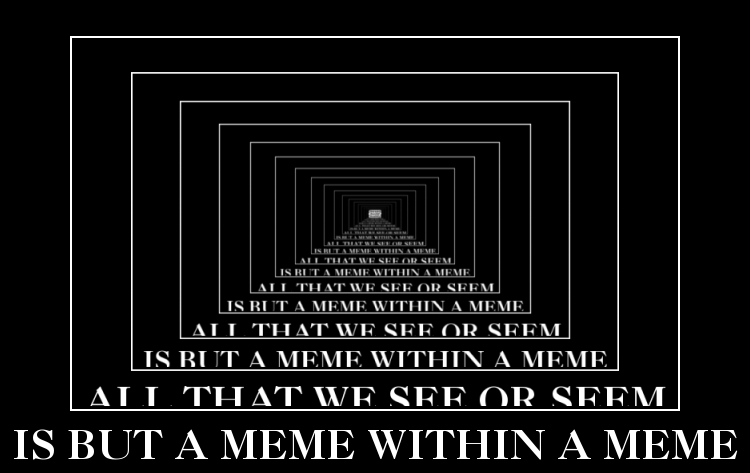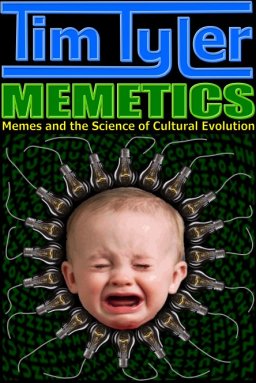 Douglas Hofstadter
Douglas Hofstadter had a nice section about memes in his 1985 book
Metamagical Themas - the book which arose from his
Scientific American column of the same name - in the chapter entitled:
On Viral Sentences and Self-Replicating Structures.
There, Hofstadter develops an interesting "anatomical breakdown" of the meme - involving memes, schemes, co-memes, bait and hooks. It has subsequently been extended to include threats and vaccimes.
Essentially a scheme is a collection of cooperating memes, called co-memes.
The common types of co-memes are now considered to be:
- bait - attractive incentive to adopt the meme;
- hook - promoting replication - being "hooked" is all about passing it on;
- threat - of punishment, to assist hook execution;
- vaccime - innoculation to protect against rival memes.
Hofstadter only really promoted bait and hook in his 1983 article. He gave some examples of these:
- Hook: “It is your duty to convince others that this sentence is true”;
- Bait: “The villain is wronging the victim.”
- Bait and subtle hook: “The whales are in danger of extinction”.
Readers of the January 1983 Scientific American column replied, with more examples of bait and hooks. Hofstadter attributes the "bait" and "hook" terminology to one of his correspondents, Donald R. Going.
Hofstadter's analysis stands up pretty well, in my opinion.
Bait and threats represent the carrot and the stick, which are needed to provide the motivation for action on the part of the host. The hook contains the component of the metabolic content of the meme that helps it to reproduce, and the vaccime helps the meme fend off competitors.
An exaample of a threat would be: “If you do not believe then you will burn in hell”. An example of a vaccime would be: "thou shalt have no other gods before me". This helps resident religious memeplexes to fend off boarding parties from other religions.
 What else is there to say?
What else is there to say?
I discuss some ways of extending schemes to include more co-memes in my post on payloads and penetration.
Ways of sub-dividing the concept of bait further are covered in my bait-breakdown article.
Incidentally, the whole "On Viral Sentences and Self-Replicating Structures" chapter seems to be currently available on Google Books.

 Douglas Hofstadter proposed that memes use "bait" as an incentive to get people to adopt them. He did this in the chapter entitled: On Viral Sentences and Self-Replicating Structures in his 1985 book Metamagical Themas. That chapter included an anatomical breakdown of memes - which included the concepts of "bait" and "hook".
Douglas Hofstadter proposed that memes use "bait" as an incentive to get people to adopt them. He did this in the chapter entitled: On Viral Sentences and Self-Replicating Structures in his 1985 book Metamagical Themas. That chapter included an anatomical breakdown of memes - which included the concepts of "bait" and "hook".
 Douglas Hofstadter had a nice section about memes in his 1985 book Metamagical Themas - the book which arose from his Scientific American column of the same name - in the chapter entitled: On Viral Sentences and Self-Replicating Structures.
Douglas Hofstadter had a nice section about memes in his 1985 book Metamagical Themas - the book which arose from his Scientific American column of the same name - in the chapter entitled: On Viral Sentences and Self-Replicating Structures. What else is there to say?
What else is there to say?









